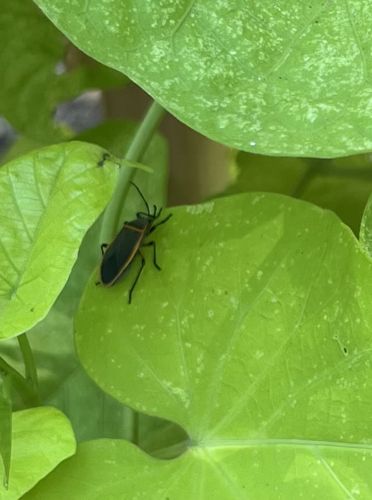Red-shouldered Stink Bug
Scientific Name: Thyanta custator
Order & Family: Hemiptera, Pentatomidae
Size: 8-12 mm

Natural Habitat
Agricultural fields, gardens, and areas with herbaceous plants, often found on various crops and weeds
Diet & Feeding
Polyphagous, feeding on sap from a wide variety of plants, including many agricultural crops (e.g., soybeans, cotton, corn, small grains) and weeds. They use their piercing-sucking mouthparts to extract plant juices.
Behavior Patterns
Like other stink bugs, it undergoes incomplete metamorphosis (egg, nymph, adult). Adults and nymphs feed on plants. They can be found aggregating on host plants. When disturbed, they may emit a foul-smelling liquid as a defense mechanism.
Risks & Benefits
Potential risk as an agricultural pest due to its extensive host range and feeding damage to various crops, which can lead to reduced yields and quality. There are no significant benefits to humans or the ecosystem typically associated with this species; rather, it is often considered a pest.
Identified on: 9/17/2025